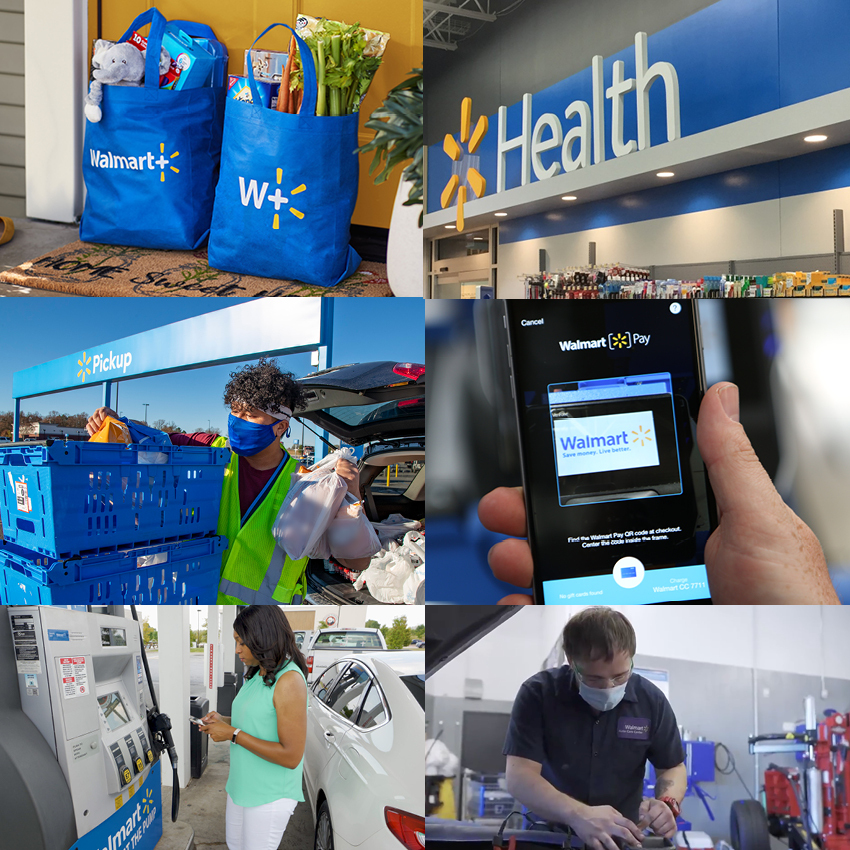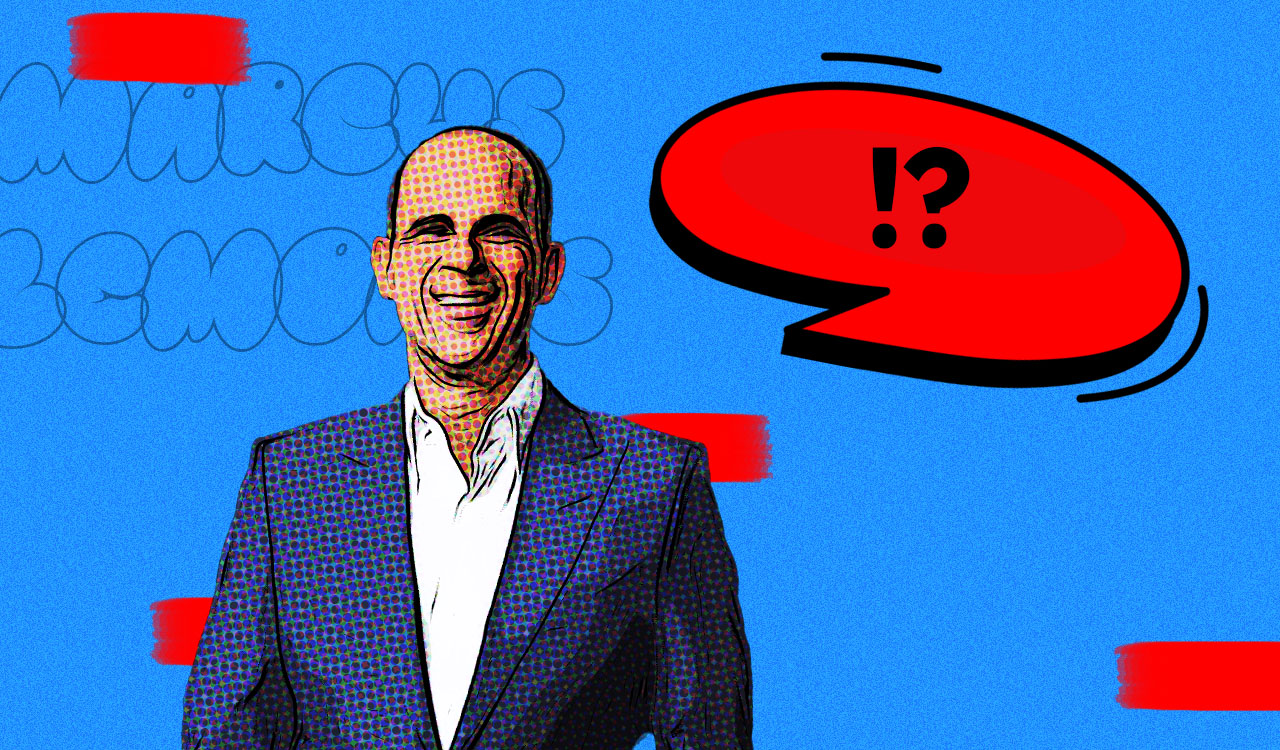The Beyond Burgers brand reflects a sea change of a whole new generation of environmental and animal friendly consumers. New products and new business models are emerging at an accelerated pace, driven by consumers and envisioned by savvy, progressive thinking CEOs. So, it strikes me that Walmart CEO Doug McMillon\’s investor day announcement that they would use their physical and digital platforms to drive businesses beyond retail — from advertising to health care (and more) — is the beginning of a new tech era portfolio business model, made possible by the consumer reach of Walmart combined with the capabilities of AI and technology.
Conglomerate Temptations
Ironically, the portfolio strategy has some of the markings of the 1960s giant corporate conglomerate model, which rapidly delivered financial magic by such giant companies like ITT, Litton Industries, Teledyne and closer to home, Sara Lee. The model was to acquire a multitude of companies on the cheap across disparate industries. These businesses typically had nothing in common and lacked any synergy at all with the \”mother\” or acquiring brand. They simply formed a huge conglomeration operating autonomously and reporting to the parent.
[callout]Doug McMillon says, \”For an increasing number of customers, Walmart will be seen more like a service. Customers will think of us as the merchant that serves their wants and needs, but in ways that take less time and effort.\”[/callout]
For example, at one point, ITT had acquired more than 350 companies, a portfolio which included Sheraton Hotels, Avis, Hartford Insurance and Continental Baking. Sara Lee began as a food company, cheesecake to be exact. Then came shoe polish, coffee, combs and brushes, toothpaste, packaged meats, underwear, gloves and pantyhose. They would finally define the company as a branded consumer product manufacturer. By the way, Sears, during the 1980s went on an acquisition spree, primarily to get into the financial services business. Of course, they failed to make it work. Sorry, I couldn\’t help, once again, throwing Sears into the \”losers\” circle. They earned it.
My only point in dredging up this conglomeration era is that it imploded as quickly as its meteoric rise. One might say that Doug McMillon is taking his eye off the ball on what Walmart does best, namely retailing. And by scaling up various ancillary services for greater future growth, if not strategically planned for a laser focus on exactly what services Walmart\’s consumers would want or need, McMillon risks diluting its core competency as it spreads its efforts across a potential myriad of unconnected services.
Then
So, the whole big lesson for the conglomerators of the 60s was that they did not focus on core competencies. They acquired companies based on great financial \”deals\” not strategically planned for profitable growth potential or aligned with synergies and shared common consumer bases. Plus, they granted the unrelated brands total autonomy. Thus, most failed and either unwound the mother conglomerate or just went out of business.
And Now
While Walmart has made various acquisitions on its way to transformation into the digital world (most notably Jet.com), they were not random ad hoc buys for quick revenue increases. They were all strategically planned, driven by Walmart\’s consumer base, which informed Walmart about additional products and services they would like to have. Some new ventures failed. Others are still being tweaked. And in the case of absorbing Jet.com into the Walmart platform, the results of that acquisition were \”mission accomplished,\” essentially kick starting and accelerating Walmart\’s digital transformation.
Furthermore, another big difference between then and now is technology. And more specifically, AI and data analytics. Walmart under McMillon\’s leadership has always been about beginning and ending every decision with the consumer front and center, omnipotent supreme. If one were to posit a consumer mantra, it would be: \”Don\’t just fulfill my needs, satisfy my dreams.\” That\’s what drives McMillon and team.
Tech Turbocharged
Now with AI and dynamic consumer analytics combining consumer opinion with behavioral data, Walmart has identified a huge array of potential services that its consumers want. Another reason McMillon is able to understand and position these services within the Walmart brand is that his mindset is not that of a traditional retail leader. He holds an expanded view of retail that is no longer about stores or websites selling stuff. It\’s about a platform upon which Walmart can place anything and everything that optimizes and fulfills the consumer\’s shopping journey. So, he is moving Walmart beyond retail (as we knew it) with the implicit acknowledgment that there are many other growth engines than selling stuff. And as I have said, not only does technology provide this growth capability, but more importantly, it powers Walmart\’s astronomical reach. Every week, 150 million customers visit their stores, website and app.
Timing Is Everything
At their recent investor day, McMillon said, \”We\’re scaling more capabilities and businesses and designing them to work together in a mutually reinforcing way. We feel emboldened and are now moving with even more speed and aggressiveness. This is the right time to make these investments,\” he said. \”The strategy, team and capabilities are in place. We know where the customer is going. We have momentum and our balance sheet is strong.\”
The operative statement: \”We know where the customer is going.\” Translation: we know what kind of services they prefer from Walmart. Walmart has already pivoted to serve many of the changing shopping habits, such as delivering groceries to customers\’ homes and curbside pickup, which soon will be automated. Walmart + membership is the answer to Amazon Prime\’s free same-day or in two-hour delivery. It\’s launching a fintech startup, partnering with investment firm Ribbit Capital to offer affordable and unique financial products for its customers and employees.
With TV and checkout screens in its 4700 stores, why not become an advertising agency to help suppliers up their marketing communications? Plus, they can promote merchandise using Tik Tok livestreaming events. And their parking lots are being used for healthcare services. All of this, and more, is being put into McMillon\’s strategic and visionary playbook.
The Costco Example
Costco and Walmart have different strategic and structural models, as well as value propositions. However, McMillon may have eyed Costco\’s enormous success in providing ancillary services for its customers. I have considered Costco as the poster child for the future of retail, expanding into all kinds of services as growth engines \”beyond (traditional) retail.\”
Based on Costco\’s success, I opined that services could become more of a destination driver for consumers than the stuff legacy retailers are currently selling in their stores. Using the Costco example, the big strategic aha is how their addicted \”cult\” customers have supported everything the brand does. Because Costco constantly delivers beyond expectations, over time they have won their customers\’ unquestioned loyalty and trust. This allows the brand to expand its DNA to include almost anything their consumers need and want – or more interestingly what they didn\’t know they wanted until Costco presents it to them.
Commerce as a Service
The Costco services role call: gas stations, pharmacies, food courts, hearing aid centers, photo processing centers, travel centers, optical dispensing centers (at a majority of its warehouses), Budget truck rental, business printing, prescription programs, RV rentals, mortgage purchase and refinancing, life insurance, dental plans, identification protection, Costco auto program, auto and home insurance, business and personal checks, bottled water delivery, business health insurance and Costco auto leasing. And listen to this: All of these services account for 20 percent of Costco\’s annual revenues, or about $30 billion.
So, Walmart could be accused as a Costco copycat, but it really doesn\’t matter. Walmart is listening to its customers and giving them what they want. And taking the long view. In the future, the retail ecosystem will be well beyond retail as we know it today.
As McMillon says, \”For an increasing number of customers, Walmart will be seen more like a service. Customers will think of us as the merchant that serves their wants and needs, but in ways that take less time and effort.\”




